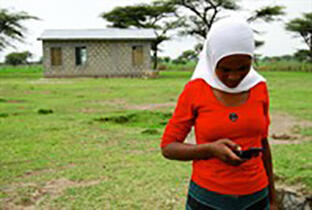
From midwives, to traditional birth attendants, to informal private practitioners, community health workers, and lay counsellors; close-to-community providers are the unsung champions of primary health care. Working directly with individuals and families, often in their homes and workplaces, they are in a unique position to observe and understand the factors that influence health, gaining insights that may have been missed if the consultation had taken place in a health facility.
Since the 1970s and the Alma Ata Declaration there has been an interest in the ways in which close-to-community workers can improve health outcomes and bolster the number of available healthcare staff in settings where formally qualified personnel are in short supply. But close-to-community providers of healthcare often face challenges which prevent them from reaching their potential. It is not clear if this model can work in all settings and what support is needed to ensure quality services reach those most in need of them in poor and remote communities.
Coming together to support close-to-community providers
The REACHOUT programme is an ambitious international, 5-year research project with a budget of 5.8 million Euros which is helping to understand and develop the role of close-to-community health workers in tackling ill-health in rural and urban areas in Africa and Asia.
REACHOUT is funded by the European Commission’s Seventh Framework Programme for Research and Technological Development and is a partnership coordinated by the Liverpool School of Tropical Medicine betweenBRAC University, Eduardo Mondlane University, Eijkman Institute for Molecular Biology, Koninklijk Instituut voor de Tropen (KIT), Liverpool VCT, Reach Trust, and Sidama Health Zone/TB REACH.
Together they will develop and assess interventions to improve close-to-community services. The findings of this research will be used to improve policy and the implementation of programmes from health systems and community perspectives. It will also build capacity in the focus countries to conduct health systems research.
There is a pressing need for learning in REACHOUT focus countries
To share research from the project and link with stakeholders REACHOUT have launched a new website. On the site you can find out more about the work we are doing in the 6 REACHOUT partner countries:
- How BRAC’s 80,000 community health volunteers and Bangladesh’s 62,000 unregistered pharmacies are meeting the health needs of the poor in urban areas
- Ethiopia’s acclaimed Health Extension Program and its ‘health development army’
- The potential of midwives, family planning volunteers and traditional birth attendants to improve Indonesia’s progress towards the Millennium Development Goals
- How REACHOUT will help inform a coordinated approach to Kenya’s Community Strategy
- The ways in which close-to-community providers are tackling HIV and TB in Malawi
- How researchers will be working with policy makers in Mozambique to try and improve child health
You can also learn about the challenges faced by programmes that use close-to-community providers, such as the way that workers have to juggle multiple workloads and competing priorities, poor planning and management which leads to staff attrition and poor supervision, and weak monitoring and evaluation systems which prevent programmes learning how they can realise their potential.